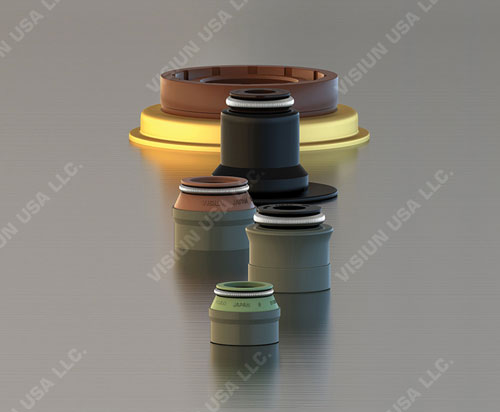Trade Professionals setting higher standards you can trust
These are used on automotive engines and geared motors primarily to prevent oil leaks at the ends of rotating shafts and the intrusion of dust particles from outside.
The word “oil seal” is used to describe these products that seal oil. In addition to preventing fluids, such as lubricants and water, and gases used in mechanical products from leaking at their “gaps,” they also keep dust, dirt and sand particles from intruding from outside.
Seals are an indispensable means for sealing machines in a variety of fields, including automobiles, airplanes, ships, train cars, construction machines, agricultural machines, petrochemical plants, and home appliances.
The products we export worldwide deliver consistent quality which is founded on our unique “sealing theory.”
Oil seals are made by bake-adhesioning the synthetic rubber part that makes up the seal lip to a metal ring. The embedded “spring” provides just the right amount of hold on the shaft, making it possible to seal moving parts.
- Oil seals for rotating applications that are properly installed suck in a small amount of air from the atmosphere, and this suction phenomenon keeps oil from leaking outside.
- As for oil seals for reciprocal movements, the difference in oil film thicknesses between the push and pull strokes constitutes the oil leakage. As such, the oil seal’s contact pressure profile (maximum contact pressure gradient) is determined so as to achieve optimum oil film thicknesses.
Oil seals are functional parts used to seal oil. Composed of synthetic rubber, metal rings and springs, they prevent leaks of lubricants from gaps within machines and bearings. They also prevent the entry of dust from the outside.




